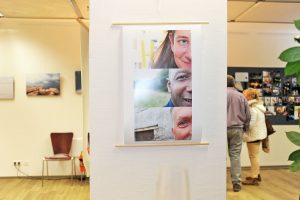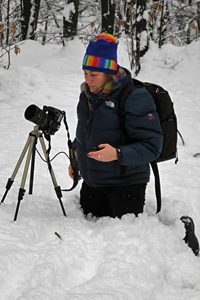High-tech tools
I’ve recently had the pleasure of opening my one-woman photography exhibition (‘Vielfalt im Augenblick’, or, ‘Diversity at a glance’). The last three or four weeks were a flurry (or a fury) of printing, and other tasks required to create the exhibition I had planned. The preparation and related discussions, inspired me to mull about photography and about art.
Snapshots as art?
Photography is one of the arts which is accessible to many. I think it’s safe to assert that more people will use some kind of camera – or take photos with their mobile phones – than will give a try to oil paints and canvas. More people will select out photos, or even apply effects to give them vibrant colours or old-fashioned sepia-tones, than will learn about different charcoals and chalks and their effects. Even basic cameras have inbuilt systems to avoid some of the most common photographic errors, resulting in nicer and nicer snapshots being made without much skill or experience. And even poorly shot images can often be improved in image processing software programmes, some of which cost nothing and are thus available to all. So, is there still art in photography?
Expression and communication
Art is more than the image. It is the intention of the artist. Thus, the well-automated cameras are the photographic equivalent of paint-by-numbers. The result might be visually satisfying, but it does not make the process one of art. Have I just snapped a nice picture of the countryside, or have I shown something about that landscape through my composition, planning, and lighting? Eventually, I will exhibit the piece printed on paper, or perhaps on cloth. Each of those choices is part of the artist’s communication to the viewer.
The very fact that art is exhibited, shows that it is directed to the viewer. And that it is relevant to others – there might something that sparks a new opinion, that affects our world view, in these photographs. If it were not, there would be no need for an audience; each artist could keep a personal collection just for him- or herself. And, although some photographers – like the amazing Vivian Maier – may not have exhibited during their lifetimes, their work may still express something. For me, Vivian Maier’s street photography certainly evokes compassion for urban poverty.
The art that I create, is filtered through my personality and reflects my internal experience. However, it is essentially a communication to the viewer. This is one reason for the existence of artist’s statements – to help the viewer enter into the thinking of the artist. And a deeper communication is related to the depth of the artist’s understanding. I am saying what I see in the world. Most memorable photos do that – here’s an online gallery to refresh your memory of some of the most famous images. Portraits showing us a small vignette that lends a sense of personal connection with a celebrity, shots celebrating the beauty of red lipstick and pale, smooth countenance, ones that show us : the artist is inspiring something in us, the viewers.
Cameras
And in all of this the camera is just a tool. This is what this blog is about: that an automated camera is no better or worse than a manual one in creating the art. A camera is like a paintbrush – simply the tool for the communication behind the art. Artists have created projects with mobile phone cameras; sometimes, it is the perfect tool. However, with a manual camera, and the experienced use of lights and lenses, I can more easily harness the equipment to my ideas. Once the technical tools are mastered, it is left for the artist to create exactly the image, the communication, that he or she is inspired to create.

